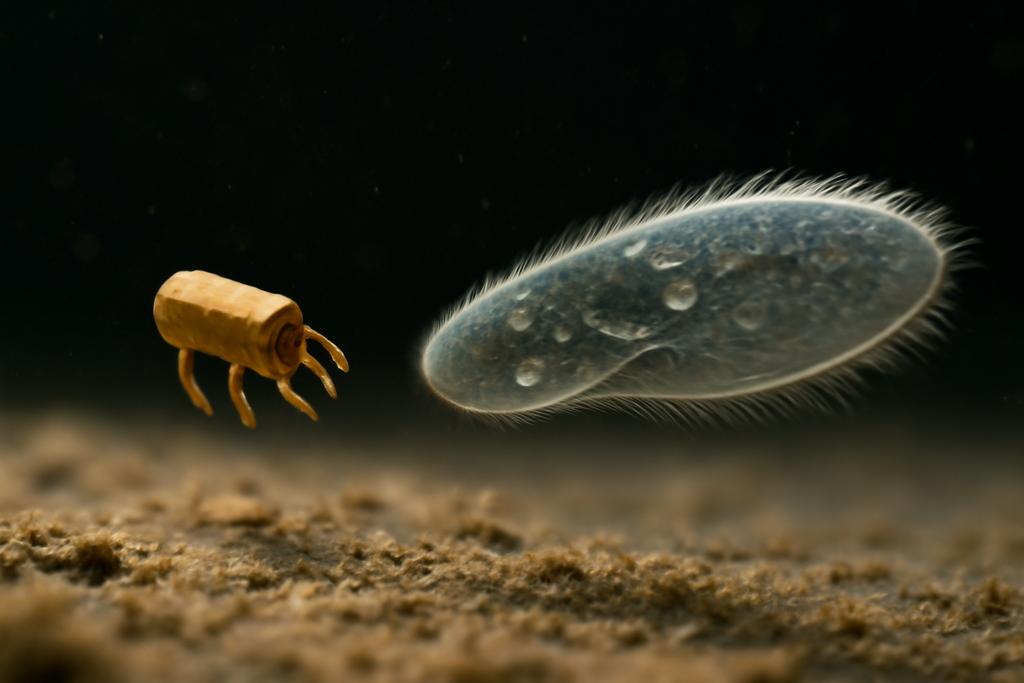Imagine a world where tiny robots, smaller than a grain of sand, could navigate our bodies delivering drugs or cleaning up environmental pollutants. This isn’t science fiction—it’s the potential of microrobotics. But building these minuscule machines capable of complex movements in viscous fluids poses a huge challenge. A new study from the University of California Davis, led by researchers Alana A. Bailey and Robert D. Guy, shows how artificial intelligence (AI) can help solve this problem, revealing surprising insights into the most efficient swimming strategies.
The Metachronal Mystery
Many tiny organisms, like Paramecium, swim using a technique called metachronal paddling. Think of it like a wave rippling across a line of oars—each oar moves with a slight delay compared to its neighbor, creating a continuous propulsive force. This strategy is surprisingly effective across vastly different environments, a clue that it might be the optimal way to move in fluid. But what makes this swimming style so efficient? And could we use AI to uncover its secrets and apply them to our miniature robots?
Reinforcement Learning: Teaching Robots to Swim
The researchers used a technique called reinforcement learning, a type of AI where a computer program learns to achieve a goal through trial and error. In this case, the “goal” was to swim as effectively as possible in a simulated environment. They created a simple model of a swimmer—an elongated body with pairs of rigid, inflexible paddles—and let the AI program experiment with different paddling patterns. The AI would try various sequences of paddle movements and receive a “reward” (a measure of how far it moved) for each attempt. The program would continuously refine its paddling strategy based on what worked best.
Unexpected Results: Front-to-Back vs. Back-to-Front
The AI discovered several fascinating paddling patterns. For tightly spaced paddles, the AI consistently selected a back-to-front metachronal wave—just like what’s observed in nature. This wave begins at the back of the swimmer, and each successive paddle stroke generates a propulsive force that moves forward. This confirmed the efficiency of this natural strategy. But as the researchers increased the distance between the paddles, something unexpected happened. The AI began to favor a front-to-back wave, which initially surprised the researchers. The front-to-back movement, while sometimes faster, turned out to be less efficient compared to the back-to-front strategy.
Beyond the Wave: Decoding Efficiency
The study goes further than simply identifying effective swimming strokes. It also analyzes the efficiency of different paddling techniques. The researchers measured both the speed and efficiency of each stroke. While the front-to-back stroke could be faster in certain situations, the back-to-front stroke consistently proved to be the more energy-efficient choice. This distinction is vital for developing microrobots, where power consumption is paramount, especially for applications like targeted drug delivery inside the body where the robots must operate for extended periods of time.
Implications for Microrobotics
This research has significant implications for designing microrobots. By understanding the principles of optimal paddling strategies uncovered through AI, engineers can create more effective and efficient miniature swimmers. The insights gained from this simple model can be extended to create more complex microrobotic designs, capable of navigating complex environments and performing intricate tasks.
The Future of Microrobotics
The findings from this research are a significant leap forward in our understanding of efficient movement in viscous fluids, opening up exciting possibilities in microrobotics and beyond. The study highlights the power of using AI to solve complex problems in biology and engineering. As AI techniques become more sophisticated, we can expect to see even more breakthroughs in the design of miniature robots, leading to transformative applications in medicine, environmental remediation, and various other fields.










